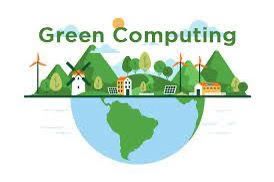In today’s tech landscape, the concept of a “green cloud” is gaining traction, offering a path to environmentally friendly computing. By transitioning traditional IT infrastructure to the cloud, businesses can lower energy consumption, cut costs, and address environmental concerns. This shift reduces the need for physical servers and optimizes the use of computing resources, resulting in a tangible reduction in carbon footprint.
The term “Green Cloud” is becoming increasingly relevant as businesses factor in CO2 emissions and overall environmental impact when selecting cloud service providers. From European providers like OVH to global giants such as AWS, Google Cloud, and Microsoft Azure, sustainability and accountability are emerging as key differentiators.

Here are some strategic approaches to foster a sustainable and responsible digital future:
1. Strategic Data Center Locations: Selecting data center locations strategically can significantly reduce power consumption. Opting for colder climates or underground facilities minimizes the need for energy-intensive cooling, unlike data centers in warmer regions.
2. Enhancing Energy Efficiency: Cloud computing thrives on maximizing resource efficiency across networks. By efficiently reallocating resources, cloud facilities can cater to different user needs without excessive energy consumption. As technologies like AI and distributed manufacturing systems gain traction, it’s vital for data centers to continually enhance energy efficiency.
3. Leveraging Virtualization: Virtualization allows organizations to consolidate multiple applications onto a single physical server, reducing the need for high-carbon real equipment. By utilizing virtual machines, businesses can lower their carbon footprint and energy usage.
4. Optimizing Hardware and Software: Cloud providers leverage modern hardware and software architectures to minimize energy consumption. Techniques like utilizing SSDs instead of HDDs and implementing dynamic energy-saving measures contribute to increased efficiency and reduced environmental impact.
5. Streamlining Usage: Optimizing IT processes at all levels, from workload management to network traffic reduction, can significantly lower energy consumption. Automation and energy-saving measures play a crucial role in ensuring infrastructure is appropriate for hosting application environments.
In conclusion, green cloud computing offers a win-win solution for businesses aiming to be both environmentally conscious and technologically advanced. By embracing sustainability through innovative technologies, efficient energy usage, and renewable resources, organizations can operate more responsibly while driving cost-effective operations.


